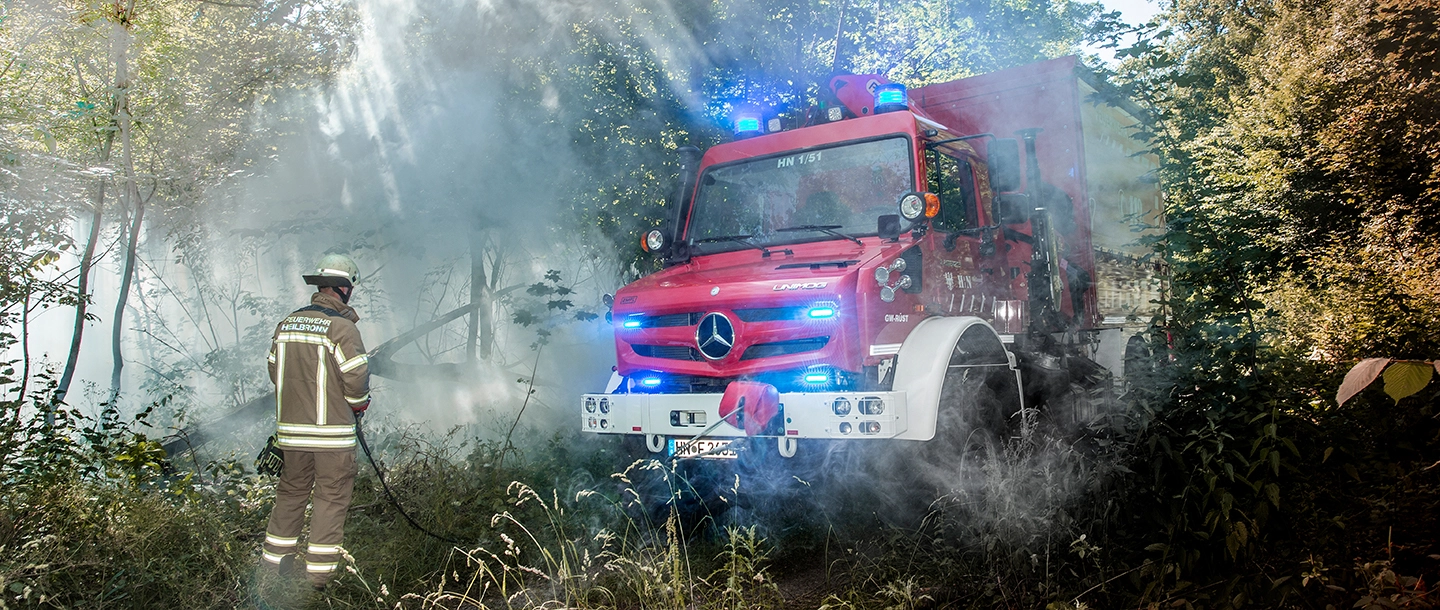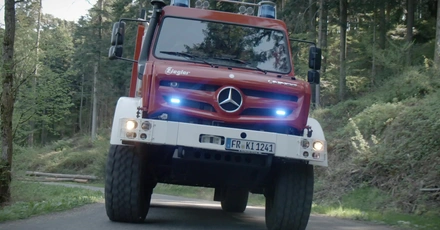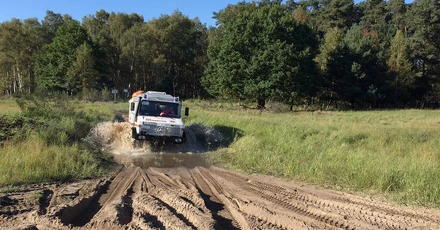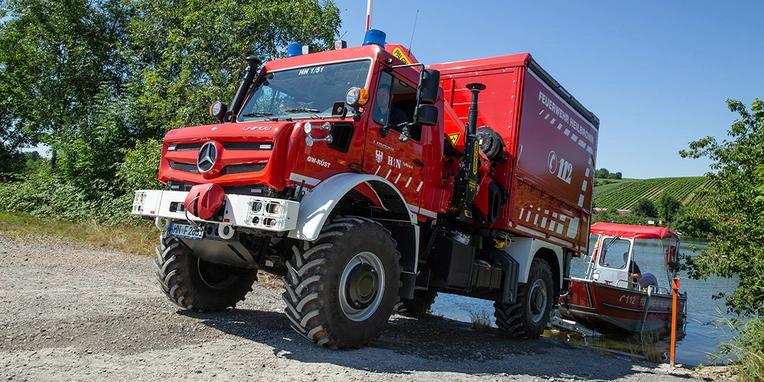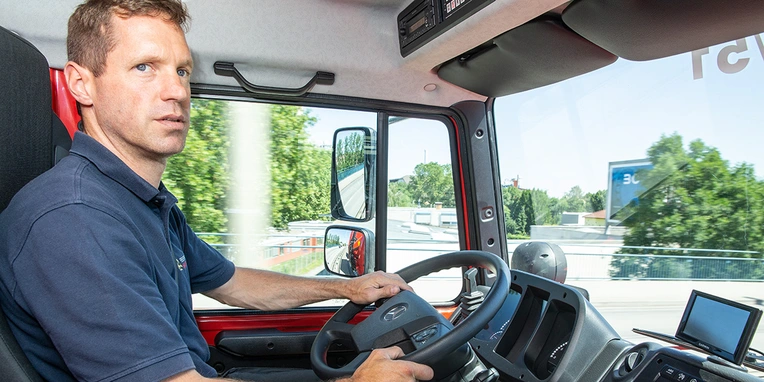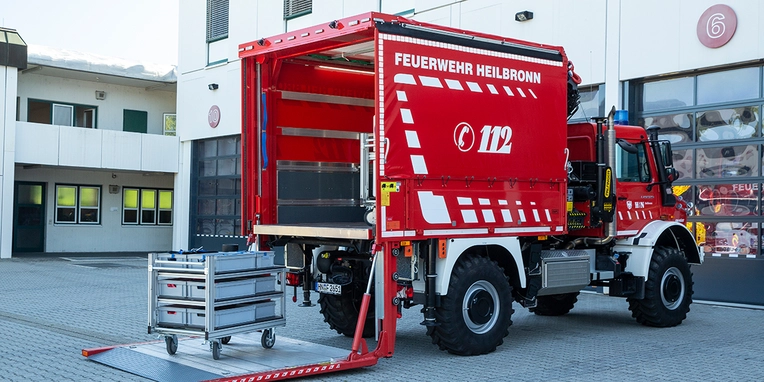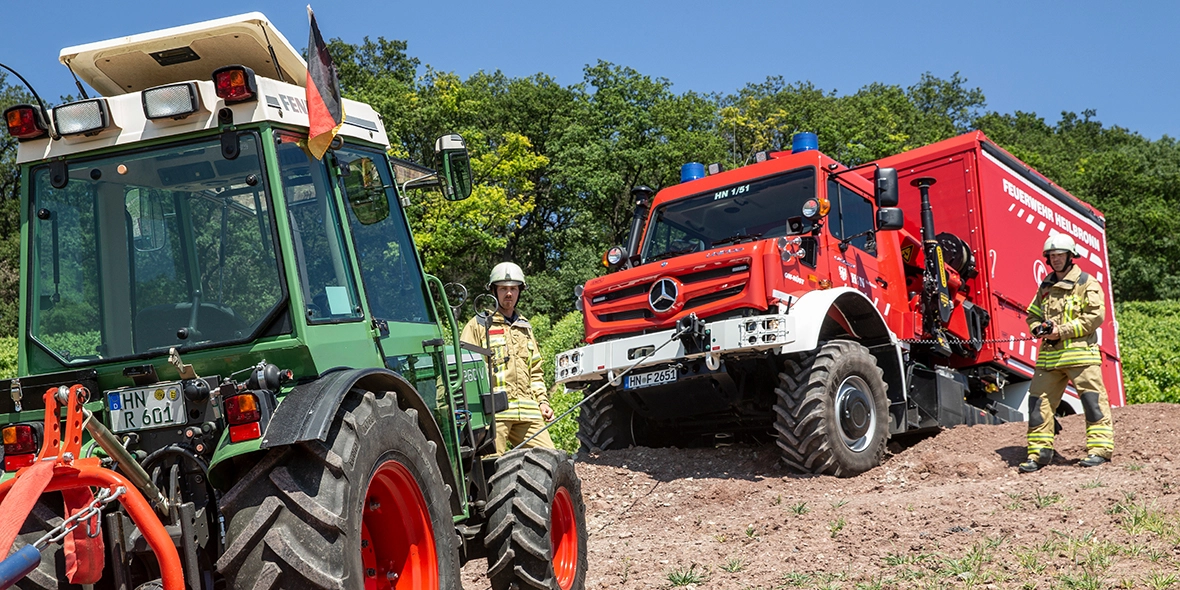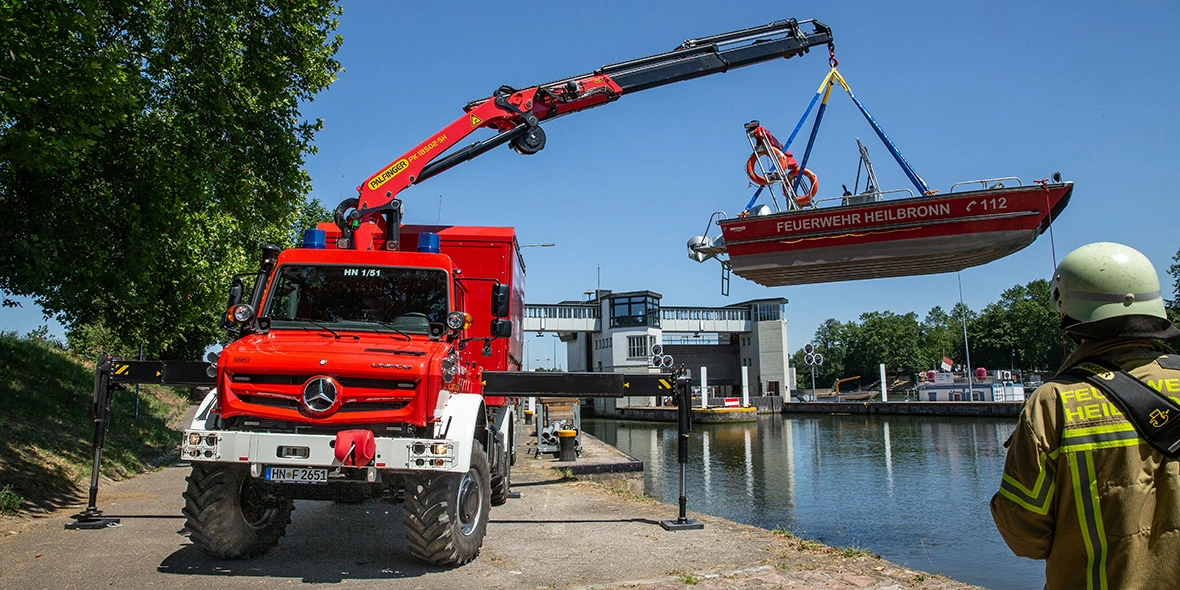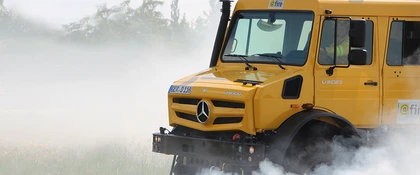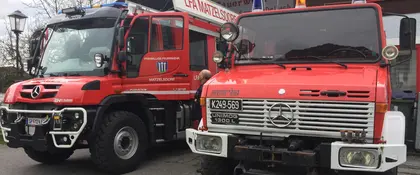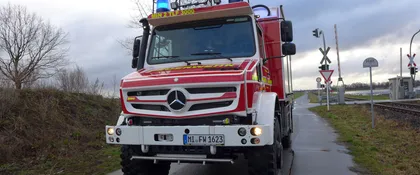Offroad Unimog U 5023 supports professional fire brigade in Heilbronn.
Heilbronn on the river Neckar is quite tranquil during the hot days of early July. As the host of Germany’s Federal Garden Show, the green city is in a relaxed mood. The fire-fighters at the station on Beethovenstrasse are less relaxed. Instead of enjoying the seeming idyll, they are called out to emergency rescue and recovery missions on the B27, B39 and B293 roads, and on the nearby A6 and A81 motorways. And that’s not to forget the rapid assistance needed when the weather changes yet again and the river Neckar bursts its banks.
For such incidents, the crew has a powerful seven-man boat complete with its own trailer. There's just one little problem: There are currently only three slipways on the Neckar Canal, so getting into the water was previously not easy. The new "Rüst" truck has eliminated this problem, because the U 5023 featuring an Empl body unit has a crane behind the driver's cab that can lift the 5.20 metre long fire service boat and its 100 hp outboard motor directly from the attached tandem-axle trailer into the water.
